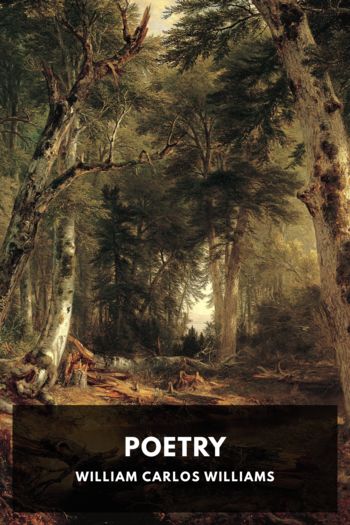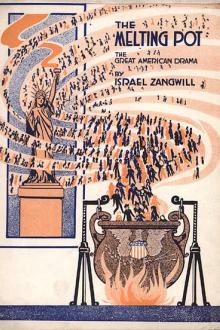No Modernism Without Lesbians, Diana Souhami [love books to read txt] 📗

- Author: Diana Souhami
Book online «No Modernism Without Lesbians, Diana Souhami [love books to read txt] 📗». Author Diana Souhami
Picasso lived there with Fernande Olivier, the model in many of his works. She had run away from an abusive husband when she was nineteen. Some winter days the studio was so cold she stayed in bed and for two months could not go out because she had no shoes. She thought intellectuals in France regarded women as incapable of serious thought and she complained she was referred to only as ‘la belle Fernande’, not as a person in her own right.
Marie Laurencin was the only woman artist in Picasso’s ‘group’ at the Bateau Lavoir. When training as a porcelain painter in Sèvres, she had met Braque and through him Picasso and Apollinaire. She felt overshadowed by them all: ‘If the genius of men intimidates me’, she wrote, ‘I feel perfectly at ease with everything that is feminine.’ Each time she and Apollinaire quarrelled she went back to her mother, who was as antipathetic to men as she became. Only when Marie Laurencin broke from ‘the genius of men’ did she become successful in her own right as a painter, designer and illustrator.
Gertrude posed for Picasso sitting in an old broken armchair with one of its legs missing. She described him as like ‘a good-looking bootblack… thin, dark, alive with big pools of eyes and a violent but not rough way’, but she was critical of his selfishness towards Fernande Olivier. He was, she said, a genius with a weak and indecisive character whose work transcended his personality.
Picasso’s portrait of Gertrude Stein (1905–6) © Peter Barritt / Alamy
Her portrait took eighty to ninety sittings because they talked so much. Gertrude thought their artistic intention similar – to change ways of expression in art – she in words and he in paint, to move on from strictures, structures, conventions, expectations and limitations; to take risks and break moulds.
In spring 1907, Picasso painted out Gertrude’s head. ‘I can’t see you any longer when I look,’ he said. They had become so absorbed in each other in conversation he had lost artistic detachment. He then went to Gósol in Spain for the summer with Fernande Olivier. Gertrude went to Fiesole with Leo. When Picasso returned in the autumn, he painted Gertrude’s face from memory as if it were an imposed mask. People told him she did not look like that. In time she will, he said, and this was true. His portrait captured a constant of many photographs of her: a stillness of thought, a sense of her dwelling inside herself and looking out from somewhere deep behind her eyes. The portrait seemed to endorse May Bookstaver’s criticism of Gertrude’s face as being unlived in. It was as if she lived elsewhere. Gertrude liked the portrait throughout her life: ‘For me it is I and it is the only reproduction of me which is always I for me,’ she said.
Leo was scathing. In his view, Picasso created a stylistic incoherence by leaving the rest of the painting unmodified. His criticism underscored his total disaffection with the work of Picasso and Gertrude, a rejection of them as individuals and artists. Before long he was calling both their efforts ‘godalmighty rubbish’, ‘haemorrhoids’ and ‘cubico-futuristic tommy rotting’. Gertrude sided with Picasso. ‘I was alone at this time in understanding him’, she said. ‘Perhaps because I was expressing the same thing in literature.’ They both, she claimed, were chroniclers of the twentieth century, dismantling components of reality and reconstructing them in individual ways. She said they both sought ‘to express things seen not as one knows them but as they are when one sees them without remembering having looked at them’.
Her portrait and their conversations formed a bond between them. Leo’s disaffection marked a fissure in the deep romance of his and Gertrude’s childhood, a romance that Leo had thought would last for ever. This fissure became open fracture when Alice B. Toklas arrived at 27 rue de Fleurus.
Alice B. Toklas arrives
At 5.12 on the morning of Wednesday 18 April 1906, movement along the San Andreas fault line caused a massive earthquake in San Francisco. The city’s water mains were destroyed and uncontainable fires broke out, which spread until it rained; 28,000 buildings were destroyed, 3,000 people killed, and 250,000 made homeless. Tents were set up in Golden Gate Park; cooking in houses was prohibited.
No. 922 O’Farrell Street, where Alice B. Toklas lived, was spared, though the chimneys came down and the water pipes broke. The house, built of stone in the 1850s, was on a safe rocky hill in a suburb known as the Western Addition. Alice, who was twenty-nine, lived there with her widowed father and grandfather and young brother, Clarence. Her mother had died when she was eighteen and she gave up studying music at Washington University to look after them all. She became ‘the responsible daughter and granddaughter in a household of men’, the only woman, the housewife. Much was demanded of her and she hated it. With an allowance for household expenses, she had to plan menus, order supplies, provide meals and do whatever was asked of her. There was, too, ‘a procession of visiting male cousins many of them very old’.
At table, she kept quiet while the men talked about politics and economics. ‘When I went to dine’, wrote her friend Annette Rosenshine, an artist,
I felt most keenly the pall that hung over the dining room; the stale smell from the chain of





Comments (0)